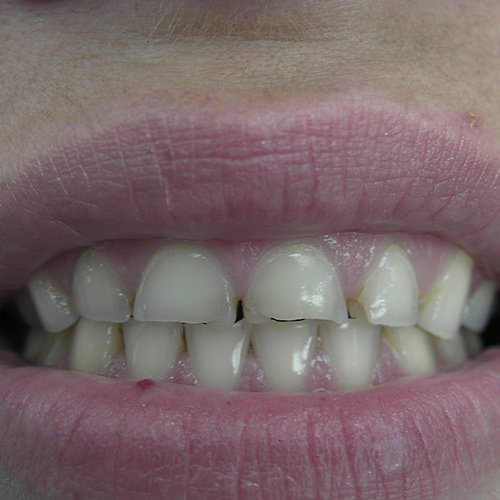How To Heal Cut Gums

Cut gums can be a painful and frustrating experience, especially when eating, drinking, or even speaking. The gums, also known as the gingiva, play a crucial role in protecting the teeth and underlying bone. When the gums are cut, it can lead to bleeding, swelling, and increased sensitivity. Fortunately, there are several ways to heal cut gums and alleviate the discomfort.
Understanding the Causes of Cut Gums
Before diving into the healing process, it’s essential to understand the common causes of cut gums. Some of the most common causes include:
- Accidental biting or chewing on the gums
- Dental procedures, such as tooth extraction or dental surgery
- Brushing or flossing too aggressively
- Using a hard-bristled toothbrush or rough floss
- Eating sharp or hard foods, such as chips or nuts
- Participating in contact sports without proper mouth protection
Initial Steps to Heal Cut Gums
If you’ve cut your gums, it’s crucial to take immediate action to promote healing and prevent infection. Here are some initial steps to follow:
- Stop the bleeding: Apply gentle pressure to the cut area using a clean cloth or gauze for a few minutes. You can also try biting on a damp tea bag to help constrict the blood vessels and stop the bleeding.
- Rinse with salt water: Mix 1 tablespoon of salt with 8 ounces of warm water and swish the solution around your mouth to help reduce swelling and kill bacteria.
- Apply a cold compress: A cold, damp washcloth can help reduce pain and swelling. Hold the compress against the cut area for 5-10 minutes, several times a day.
- Take over-the-counter pain relievers: If the pain is severe, you can take over-the-counter pain relievers such as ibuprofen (Advil, Motrin) or acetaminophen (Tylenol).
Home Remedies to Promote Healing
In addition to the initial steps, there are several home remedies that can help promote healing and alleviate discomfort:
- Aloe vera gel: Apply aloe vera gel to the cut area using a cotton swab. Aloe vera has anti-inflammatory properties that can help reduce swelling and promote healing.
- Hydrogen peroxide: Mix equal parts hydrogen peroxide and water and swish the solution around your mouth. Hydrogen peroxide can help kill bacteria and reduce inflammation.
- Turmeric paste: Mix 1 teaspoon of turmeric powder with enough water to form a paste. Apply the paste to the cut area using a cotton swab. Turmeric has anti-inflammatory and antibacterial properties that can help promote healing.
- Coconut oil: Apply coconut oil to the cut area using a cotton swab. Coconut oil has anti-inflammatory properties that can help reduce swelling and promote healing.
Professional Treatment Options
If the cut is deep or large, or if you experience any of the following symptoms, it’s essential to seek professional treatment:
- Increased pain or swelling
- Pus or discharge from the cut area
- Fever or chills
- Difficulty eating or drinking
- Swollen lymph nodes
Your dentist or healthcare provider may prescribe antibiotics to prevent infection or recommend further treatment, such as:
- Suturing: If the cut is deep or large, your dentist or healthcare provider may need to suture the area to promote healing.
- Dental bonding: If the cut has exposed the tooth root, your dentist may need to apply a dental bond to protect the tooth and promote healing.
- Gum grafting: In severe cases, your dentist may need to perform a gum graft to repair the damaged gum tissue.
Prevention is Key
To prevent cut gums in the future, it’s essential to practice good oral hygiene and take preventive measures, such as:
- Brushing and flossing gently: Use a soft-bristled toothbrush and gentle flossing technique to avoid damaging the gums.
- Using a mouthguard: If you participate in contact sports, wear a mouthguard to protect your teeth and gums.
- Eating a balanced diet: Eat a balanced diet that includes plenty of fruits, vegetables, and whole grains to promote healthy gums.
- Visiting your dentist regularly: Regular dental check-ups can help identify any oral health issues early on and prevent more severe problems from developing.
By following these steps and taking preventive measures, you can help heal cut gums and maintain good oral health.
How long does it take for cut gums to heal?
+The healing time for cut gums can vary depending on the severity of the cut and the effectiveness of treatment. Generally, cut gums can take anywhere from a few days to a few weeks to heal.
Can I use mouthwash to heal cut gums?
+While mouthwash can help kill bacteria and reduce inflammation, it's essential to choose a mouthwash that is gentle and non-irritating. Avoid using mouthwashes that contain harsh ingredients, such as alcohol or hydrogen peroxide, as they can further irritate the gums.
How can I prevent cut gums in the future?
+To prevent cut gums in the future, practice good oral hygiene, including brushing and flossing gently, using a soft-bristled toothbrush, and visiting your dentist regularly. Additionally, wear a mouthguard if you participate in contact sports, and eat a balanced diet that promotes healthy gums.
Remember, if you experience any symptoms of infection, such as increased pain, swelling, or pus, seek professional treatment immediately. By taking preventive measures and seeking professional treatment when necessary, you can help heal cut gums and maintain good oral health.

